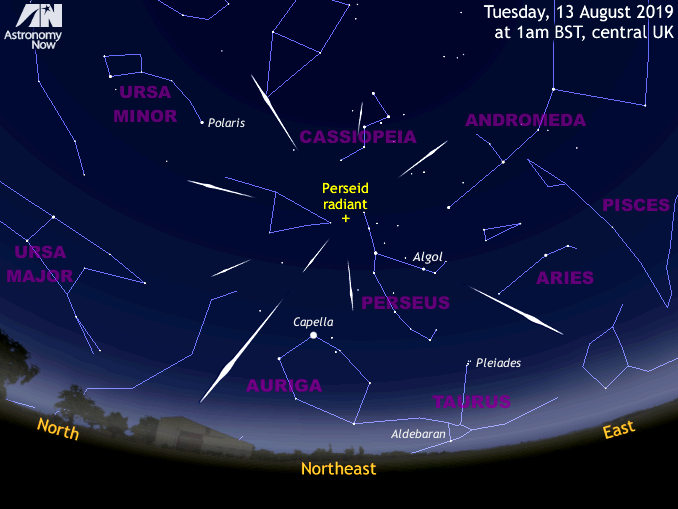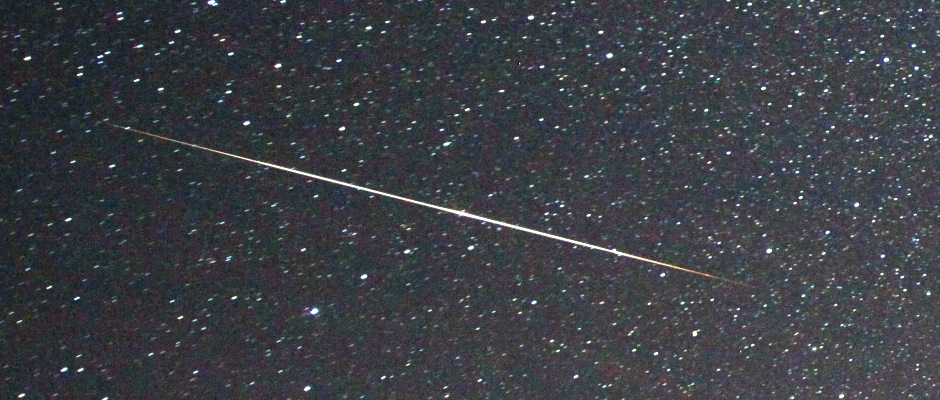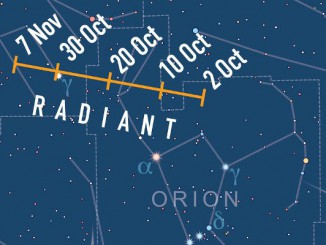
A reliable annual shower, the Perseids grace the skies of late summer in the holiday period when families and friends can gather in comfortable temperatures to watch these bright, fast meteors that often leave persistent trails. They take their name from the constellation of Perseus where they appear to originate.
What causes shooting stars?
The Perseids originate from rocky debris shed by Comet 109P/Swift-Tuttle and strewn along its 133-year-long orbit. Our planet punches through this widely-dispersed cloud in the period from 17 July to 24 August, encountering the densest particle swarms around 13 August. The cometary particles enter Earth’s atmosphere at speeds up to 58 kilometres per second (130,000 miles per hour). At such velocities, friction with the air causes the debris to vaporise, creating the momentary streak of light we call a meteor.
Amazingly, most meteors are caused by particles the size of a grain of sand; a spectacular fireball might be caused by something the size of a pea. While you might see lucky enough to see such an event on any moonless night over the month-long duration of the Perseid shower, the intensity and frequency of meteors reach a relatively short-lived peak around the night of 12–13 August. At this time you could, under favourable conditions, see a shooting star every minute.
The swarms of tiny particles shed by Comet 109P/Swift-Tuttle are easily deflected by the gravitational tugs of planets, so predicting when Earth is most likely to intersect the densest clouds of cometary debris is difficult. The best predictions indicate that peak activity will occur between 2h UT (3am BST) and 15h UT (4pm BST) on 13 August. However, research by Peter Jenniskens indicates that Earth could pass through a dense filament of particles at 2h UT (3am BST) on the 13th. If Jenniskens’ prediction for 100+ meteors per hour holds true, it coincides with moonset and dark skies for the UK.
How to see the most meteors
Faint meteors are always the most plentiful, so to maximise your chances you should find a safe location that is as far removed from sources of light pollution and allow 20 minutes for your eyes to become fully dark-adapted. (No taking a sneaky peek at your smart ‘phone as you’ll have to spend another 20 minutes getting your ‘night eyes’ back again!) A flask of your favourite hot beverage and a reclining chair is a good idea as you’ll be still for long periods during your vigil. Don’t forget to bring an extra jacket or a blanket as temperatures can dip after midnight when shooting stars are most plentiful.
The beauty of meteor watching is that all you need is your unaided eyes – with spectacles for distant viewing, if required. Observing with friends is always fun, sharing the ‘oohs’ and ‘aahs’ when a particularly brilliant shooting star graces your sky. Don’t concentrate purely on the radiant in the northeast; let your eyes wander around the eastern sky to maximise your chances. Even if you miss the occasional bright Perseid, there’s a beautiful swathe of Milky Way passing overhead.



